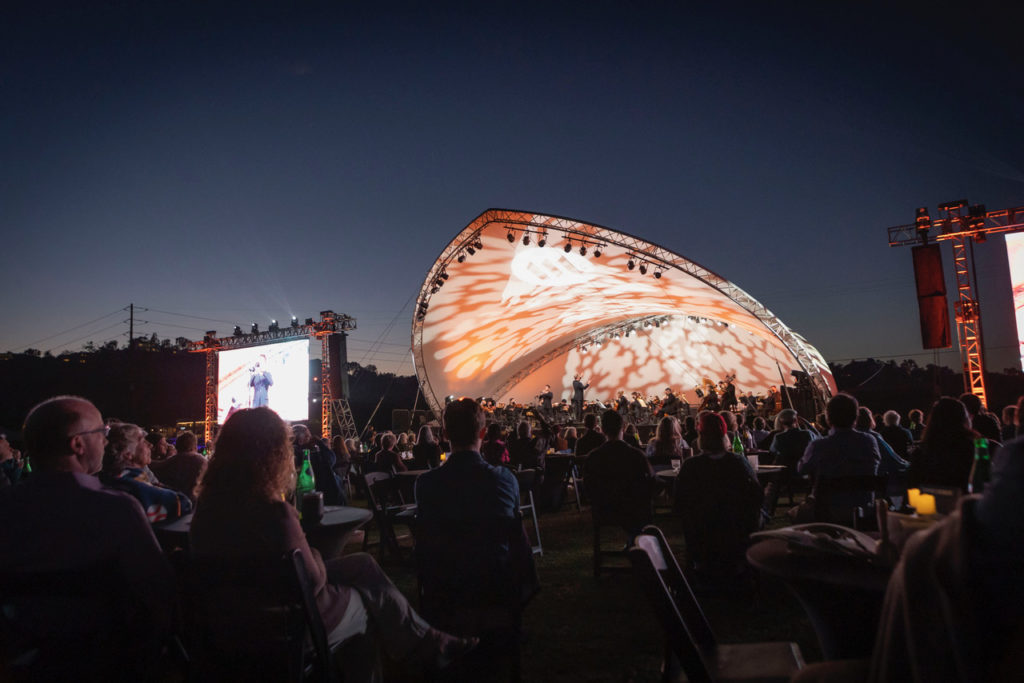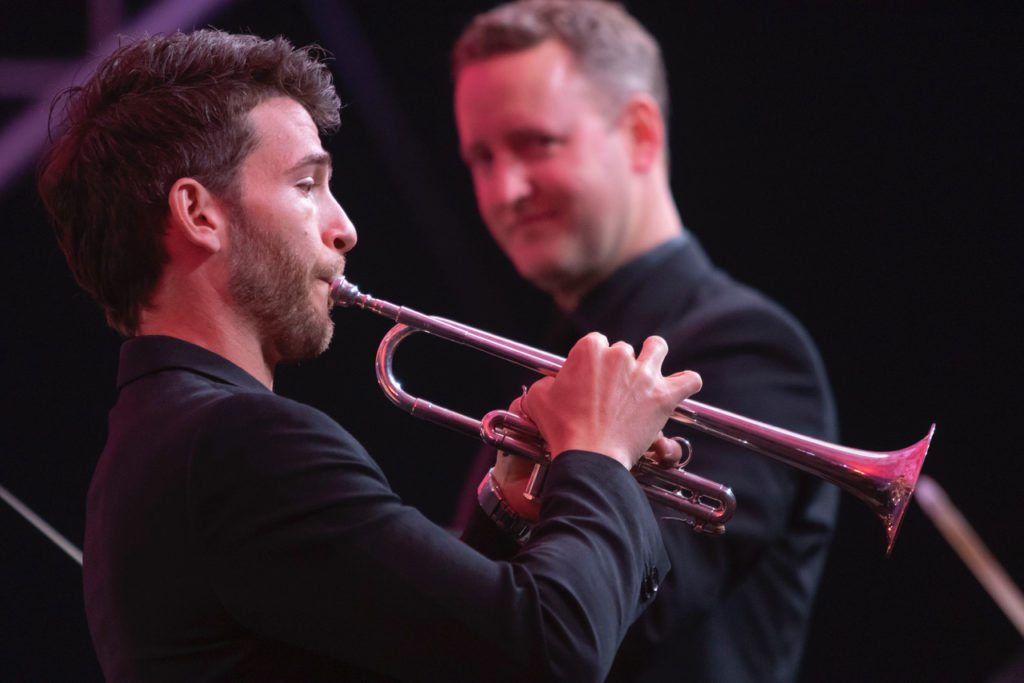Mainly Mozart in an Open Field East of the I-5
Sitting in an open field at Del Mar’s Surf Cup Sports Park Saturday night experiencing a concert by this year’s Mainly Mozart Festival Orchestra brought back memories of Mainly Mozart’s first concert. In the summer of 1989, founding Music Director David Atherton conducted Mainly Mozart’s inaugural concert from the Old Globe Theatre’s outdoor stage in Balboa Park.
I was also flooded with memories of more recent Mainly Mozart concerts under the baton of current Music Director Michael Francis performed in downtown San Diego’s Balboa Theatre, the festival’s regular venue until the current pandemic ended indoor performance with a live audience present. The polish of this festival orchestra and the warm sonic glow of its string sections have always been a Mainly Mozart trademark.

Mainly Mozart at Del Mar’s Surf Cup Sports Park [photo (c.) J Kat Photo]
Francis opened the concert with Maurice Ravel’s Le Tombeau de Couperin, the composer’s exquisitely orchestrated version of his solo piano suite written during World War I as a tribute to France’s most illustrious Baroque composer, François Couperin, and to honor the memory of personal friends killed in the war. Principal Oboe Nathan Hughes has graced many a Mainly Mozart Festival Orchestra over the years, and his suave, even opulent phrasing of Ravel’s gorgeous themes in the Prélude and Menuet movements provided some of the few rewards of the evening. Because of Ravel’s masterful, transparent orchestration and Francis’ deft conducting, the sound system gave a reasonable facsimile of the work, although I kept wondering why the strings sounded so thin in comparison to the woodwinds.
However, the full orchestra unleashed in Haydn’s flashy Trumpet Concerto in E-flat Major and Mozart’s ebullient Symphony No. 39, K. 543, overwhelmed the sound system, giving the violins an unflattering penetrating, steely edge and compressing the overall body of the string ensemble that made the orchestra seem much smaller than the number of players actually on the stage. The sound system reduced the cellos’ bass line to an anonymous hum that sounded something like an early Moog synthesizer. My heart went out to those cellists on stage who were clearly striving to create beauty!

Conrad Jones, trumpet, & Michael Francis [photo (c.) J Kat Photo]
Of Mozart’s three final symphonies, No. 39 in E-flat Major is played the least, but is it no less rewarding than the “Jupiter,” No. 41. Francis and the orchestra gave an admirable account of this symphony, and Principal Clarinet Boris Allakhverdyan’s shapely solos and golden tone made the Menuetto shine. I spent most of Symphony No. 39 imagining what it would sound like if Mainly Mozart had been performing in the Balboa.
This year’s Mainly Mozart Festival continues in the same venue with concerts on June 16, 18, and 19.

Ken Herman, a classically trained pianist and organist, has covered music for the San Diego Union, the Los Angeles Times’ San Diego Edition, and for sandiego.com. He has won numerous awards, including first place for Live Performance and Opera Reviews in the 2017, the 2018, and the 2019 Excellence in Journalism Awards competition held by the San Diego Press Club. A Chicago native, he came to San Diego to pursue a graduate degree and stayed.Read more…

We were seated right in front of the shell and found the acoustics just about perfect and the music delightful.